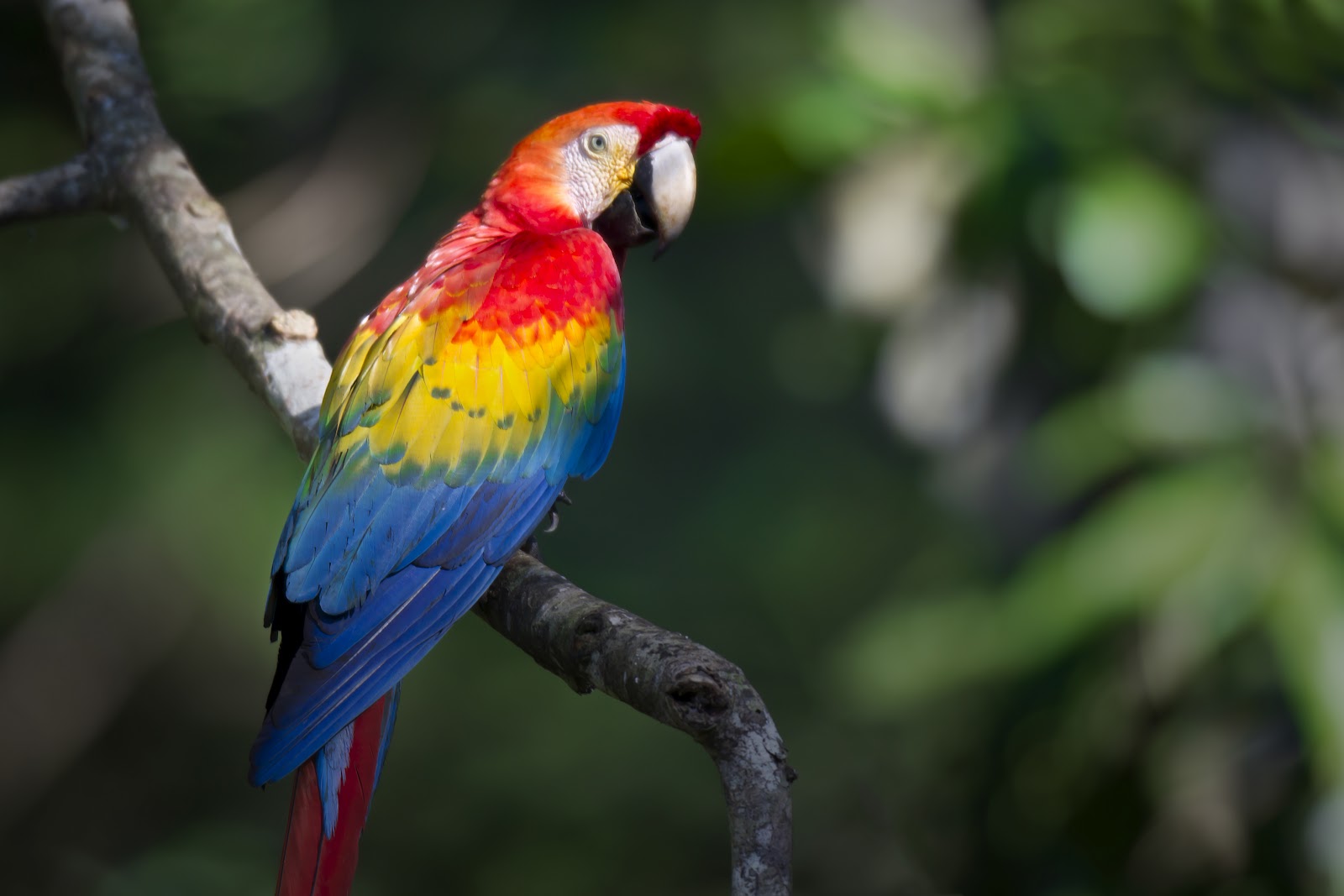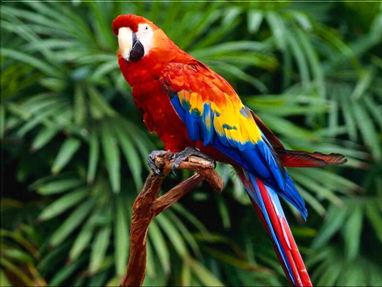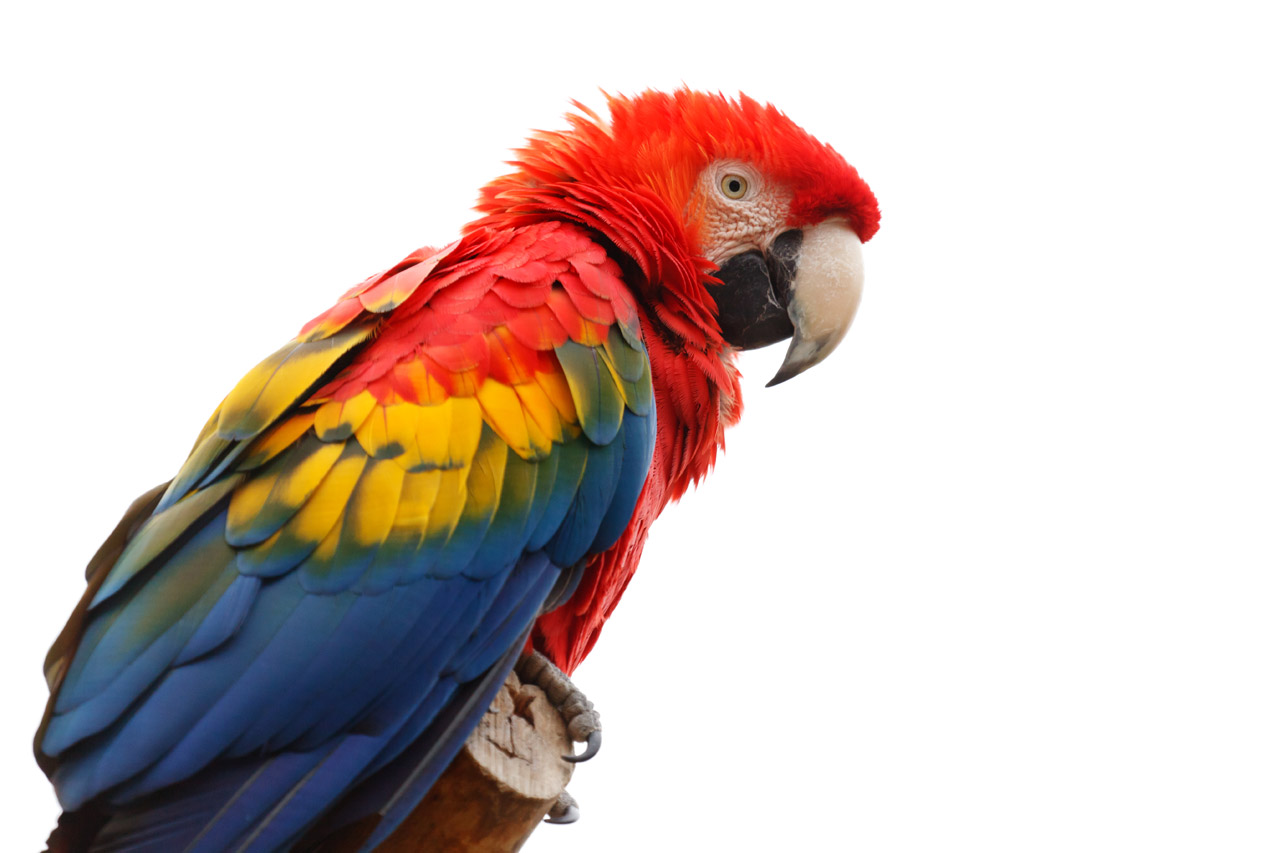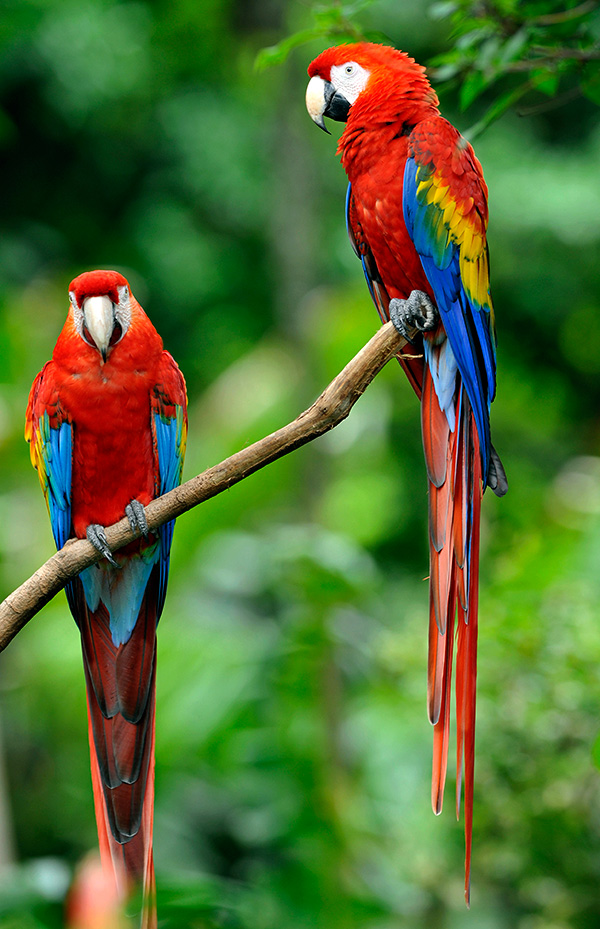
Ara macao
SUBFAMILY
Psittacinae
TAXONOMY
Psittacus macao Linnaeus, 1758, South America. Two subspecies.
OTHER COMMON NAMES
French: Ara rouge; German: Arakanga; Spanish: Gaucamayo
Macao.
PHYSICAL CHARACTERISTICS
33 in (85 cm); 2.1–2.2 lb (1,060–1,123 g). Brilliant plumage
with red, blue, green, and yellow. Bare face patch, yellow wing
patch, and long, red tapering tail.
DISTRIBUTION
A. m. macao: northeast Bolivia and central Brazil north to
Guianas, north Colombia, Panama, and Costa Rica. A. m.
cyanoptera: southeast Mexico to Nicaragua.
HABITAT
Lowlands, on dry ground in evergreen forest and dense gallery
woodland traversing savanna, giving way in swampy areas to
blue and yellow macaw (Ara ararauna); favors riverine forest or
woodland, and often visits mangroves or remnant large trees in
clearings and cultivation; in parts of Central America occurs in
deciduous or Pinus forest.
BEHAVIOR
Among the most spectacular of the neotropical birds, brilliant
colors and loud calls making them highly conspicuous, especially
in flight. Generally in pairs, family parties or small flocks
of up to about 20 birds; the strong pair-bonds evident as paired
birds fly together, their wings almost touching; daily morning
and evening flights along regular routes between nighttime
roosts and scattered feeding areas. Can be tame where not molested,
but normally extremely wary and at slightest sign of
danger rises high into the air while screeching loudly.
FEEDING ECOLOGY AND DIET
Feeds arboreally, taking mainly seeds, nuts, fruits, berries, and
flowers, with large, rather soft fruits favored. In Brazil, important
foods are Lecythis fruits, and fruits of juvia Bertholletia excelsa
and Syagrus palms. With other parrots congregates at
clay-licks on exposed banks; purpose unknown, but suggestion
that consuming mineralized clays may alleviate effects of toxic
alkaloids in unripe fruit.
REPRODUCTIVE BIOLOGY
Monogamous; pair-bond probably lifelong. Breeding season
variable over extensive range, but in north nesting recorded in
March–April and in south from October–March; nest in hollow
in large tree high above ground; reuse of nests in successive
years; one clutch of one or two, rarely up to four eggs, but
normally only one or two chicks fledge. In captivity, incubation
lasts 24–28 days; young birds leave the nest at approximately
14 weeks.
CONSERVATION STATUS
Remains common only in remote areas away from human
HABITAT
ion. Deforestation and capture of birds for live-bird
trade have extirpated populations in much of Central America,
where total population of cyanoptera estimated at about 4,000 in
late 1990s; elsewhere declining in accessible localities, but good
numbers survive in some national parks and reserves. Listed on
CITES Appendix I.
SIGNIFICANCE TO HUMANS
Probably best known of neotropical parrots, and often depicted
in travel brochures. Highly prized as aviary bird and as household
pet, so nestlings persistently taken; also hunted in some
regions for food and for feathers.
Other popular Animals
Photo Gallery of - Scarlet macaw




 Animalia Life
Animalia Life